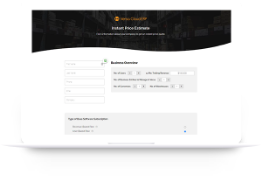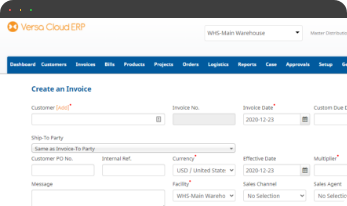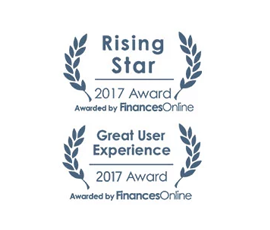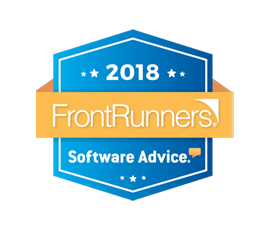Account reconciliation stands as a crucial phase within the financial close process. This practice involves cross-checking the balance in a company’s general ledger (GL) against an independent statement and thoroughly investigating any disparities. This meticulous scrutiny provides reassurance to accountants and business leaders, affirming the currency, accuracy, and comprehensiveness of the company’s financial records. Moreover, it yields significant outcomes as GL balances directly influence the company’s financial statements, pivotal for both internal decision-making and external stakeholders.
While bank reconciliations often take precedence due to their direct impact on cash flow, the scope of account reconciliation extends beyond solely financial aspects. It encompasses various accounts such as inventory, accounts receivable, and intercompany accounts, among others. Establishing account reconciliation practices for all GL accounts is considered a cornerstone of sound financial management. Moreover, automating this process elevates its efficiency and effectiveness, positioning businesses for greater operational success.
What is Account Reconciliation?
Account reconciliation refers to the process of comparing the balances in a company’s general ledger with external records, such as bank statements or supplier statements. This comparison helps to ensure that the financial data recorded in the company’s books accurately reflects the transactions that have occurred. Any discrepancies or differences between the two sets of records are investigated and resolved to ensure the accuracy and integrity of the company’s financial information.
There are 7 types of GL accounts that track the financial activities of the business:
- Assets
- Liabilities
- Equity
- Revenue
- Expense
- Gains
- Losses
In the bookkeeping process, every business transaction is recorded in two or more general ledger (GL) accounts through corresponding debits and credits, reflecting the inflow or outflow of value within the business. Contrary to common belief that it only pertains to cash accounts, account reconciliation verifies the accuracy of all GL accounts by cross-referencing their details with data from external sources, like a bank statement. This procedure aims to identify and rectify errors, omissions, or duplications within the GL before reconciliation can proceed.


The account reconciliation process compares balances and activities in a GL Account to another independent source.
Account Reconciliation Key Takeaway
- Account reconciliation functions as a primary internal control, ensuring the precision of a company’s general ledger (GL) and aiding in fraud detection.
- Although bank reconciliation is prevalent, all GL accounts, particularly assets, liabilities, and equity accounts, can derive benefits from reconciliation processes.
- The documentation approach, primarily, aids in identifying and assessing specific reconciling items, while the analytic method provides an alternative approach.
- Automation is ideal for account reconciliation, allowing staff to dedicate their time to exception resolution and thorough account analysis.
Why is Account Reconciliation Important in an ERP?
Account reconciliation serves as a potent internal control mechanism, ensuring the accuracy of a company’s general ledger (GL) account balances. This precision extends to financial statements and analyses, which rely heavily on GL data and are pivotal for internal decision-making and external stakeholder assessment. Regular reconciliations against external data sources can also uncover instances of fraud and anomalies. For instance, reconciling inventory involves comparing the GL account balance of stored items with an actual physical count of warehouse stock, potentially revealing discrepancies caused by theft.
Balance sheet accounts are particularly important—assets, liabilities, and equity—due to their permanent nature in financial accounting. Unlike revenue accounts, which reset each fiscal year, balance sheet account balances persist across accounting periods. Therefore, maintaining accuracy is paramount, with errors requiring prompt reconciliation.
Things to keep in mind while starting the Account Reconciliation workflow in Versa Cloud ERP
What is Importing a statement vs Reconciliation?
In Versa Cloud ERP, a user can import the below statements:
- Credit card
- Bank
- Expenses
Importing a statement in the Versa system is the first step in the reconciliation workflow. This will allow the user to create a record in the system of the bank transactions.
A common question asked by businesses is will Versa automatically categorize the transaction type for them? The answer is YES
For the first time, a user will have to set the categories for the transactions in Versa. Versa Cloud ERP will then automatically categorize the transaction type such as expenses, interest, charges, etc for the user going forward if a similar transaction is found.
The import can be done by going under Tool> Imports and Exports> Bank Transactions

See this article for more details.
Reconciliation on the other hand is the process of comparing two sets of records, as explained earlier. External records are bank statements, credit card statements, or income and expenses statements, and internal records are the transactions made in the ERP either by way of doing a workflow (Raising a PO/SO, Creating an Invoice/Bill, etc.) or by passing a manual GL entry.
Account Reconciliation in Versa Cloud ERP: Workflow
The process can be started by going under the tab General Ledger > Reconciliation. The first thing that will be seen is the below screen:

Key Features:
As of Date:
The “as of date” on the statement is the date the business wants to do the reconciliation.As an example, the user has a bank statement for the date 30th June then in Versa, the user will populate the “as of date” as 30th June.
Ending Balance:
The ending balance is the amount reflected as closing as of the date of the bank statement. The balance as of 30th June will be considered as an ending balance.
Account: The business GL account that needs to be reconciled with the bank statement will be selected under “account”
Bank charges- Expense Account:
The account where the business would like to record all bank-related expenses will be selected under this header. Versa Cloud ERP will provide a default account listed as bank charges. However, a business can create a specific account to record any such charges according to their requirements.
Interest earned- Revenue Account:
Similarly, the account where the business would like to record all interest received will be selected under this header. Versa Cloud ERP will provide a default account listed as interest-related revenue. However, a business can create a specific account to record any such interest according to their requirements.
This will allow the user to start the process of reconciliation.

As highlighted in the screenshot above, we have selected:
As of date: 30-June- 2022
Ending balance: 100,000s
Account: USD Checking
Bank Charges- Expense Account: Bank Charges
Interest Earned- Revenue Account: Interest Income
Post selecting the desired account and date, a user will hit create.
Once the reconciliation process is started, Versa Cloud ERP will show a list of transactions for the period. The user can check all the transactions they wish to include in the reconciliation process. The goal is to make the difference amount zero or as close to zero as possible.

During the process, the user can face 2 scenarios:
- Transactions in Versa but not in the bank statement.
- Transactions are considered in the bank statement but not in Versa.
Let us look at the scenario in detail and see how they affect the reconciliation process:
- Transactions In Versa but not in the bank.
An example of this can be a cheque deposited by the business to the bank on the 28th of June. The business will typically consider this as a part of the current month’s reconciliation. However, the bank may take 2-3 business days to process and realize it in the business’s bank accounts. When the bank statement is generated on the 30th of June, the statement will not have any entry about the cheque deposit, but the business will reflect the deposit date as the 28th of June and the transaction will show up in the record.
In Versa
To overcome this, when checking the line items on the reconciliation screen the user will leave out the cheque deposit line item to match the transactions to the bank statement.
- Transactions are in the bank but not in Versa.
These entries will comprise bank charges/expenses and interest. The business will not know the exact value of these till they do not receive the bank statement. Therefore, the external bank statement will consider these transactions whereas the internal statement will not reflect them.
In Versa
To overcome this, the business can pass manual GL entries to match the value during reconciliation.
What if the user does not upload the bank statement in Versa?
Uploading the bank statements in Versa Cloud ERP is suggested. However, it is not mandatory and there may be scenarios where the user does not upload a bank statement in Versa.
Many companies run it once a month, but if businesses want to/are required to run it frequently Versa allows the flexibility of uploading a list of transactions more than once. Additionally, Versa Cloud ERP also allows users to add bank transactions manually and add a GL entry if such a need arises.
Effectively manage your financials, accounting and account reconciliation needs, inventory, production, warehouse management, order management, and other operations of your Shopify Store workflows with our award-winning ERP.
Let Versa Cloud Erp’s do the heavy lifting for you.
Empower your business with the knowledge to navigate the realm of an Integrated ERP solution. Gain insights, streamline processes, and propel your accounting management to new heights with this comprehensive guide.
With Versa Cloud ERP’s Implementation guide learn how a business can ensure a successful ERP Solution Implementation. Navigate the complexities of implementation with confidence!
A Small Business in the modern day with Omnichannel Retail is complex and requires resources to deliver on its goals and achieve its full potential. To create a small business success story business owners need an ERP Solution that grows with them.
Do Business on the Move!
Make your businesses hassle-free and cut the heavyweights sign up for the Versa Cloud ERP today!!
Join our Versa Community and be Future-ready with us.











